Know How To Identify Bhringraj Plant? Know All It’s Benefits and Uses
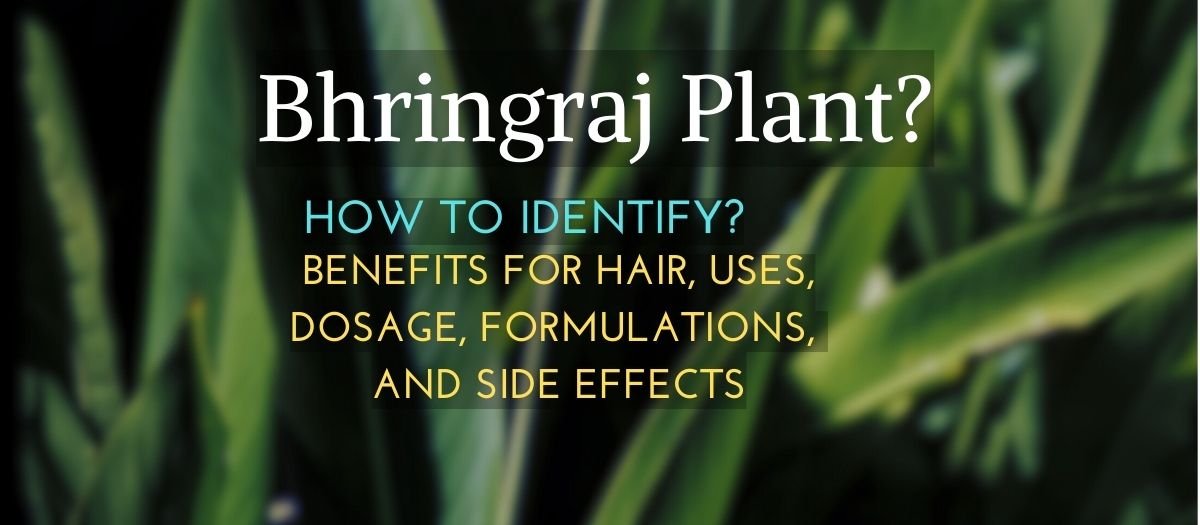
What is Bhringraj, and how to identify the Bhringraj plant? The Bhringraj plant (Eclipta prostrata) is highly valued in Ayurveda and traditional herbal medicine due to its powerful medicinal qualities. Bhringraj is well-known for its several uses in skincare, hair care, and general health and has attracted interest from all around the world. Still, it might be difficult for the inexperienced eye to spot this precious plant among all the foliage.
With the help of this comprehensive guide, we will explore the enigma surrounding the Bhringraj plant and provide in-depth knowledge on its shape, habitat, and unique traits. Being able to recognize Bhringraj is a crucial first step to utilizing its many advantages, regardless of whether you are an experienced herbalist, an inquisitive enthusiast, or someone looking for natural medicines.
Discover the mysteries of Bhringraj’s appearance, preferred habitats, and development habits as we explore the complex field of botanical identification. You’ll have the knowledge and self-assurance to identify this amazing plant in its natural environment at the end of this essay, enabling you to precisely and clearly investigate its medicinal potential.
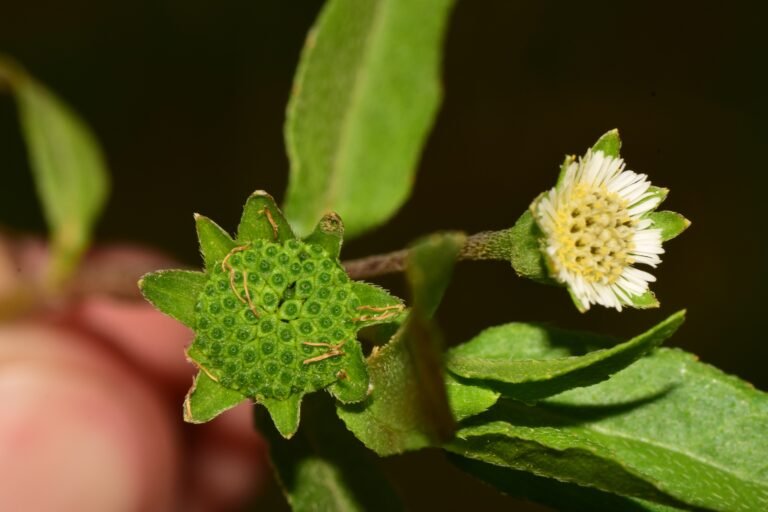
Benefits For Hair, Uses, Dosage, Mixtures, and Side Effects of Bhringraj
Bhringraj, which is also called “false daisy” in English, is a traditional “wonder herb” that is highly suggested for making hair long, silky, and strong. This plant comes from the sunflower family and is known as karisalankani in Tamil, gunta galagaraaku in Telugu, kesuriya in Bengali, kannunni in Malayalam, and bhangaro in Gujarati. It is used all over the world for its many health and hair benefits.
How To Identify Bhringraj Plant?
It takes 3 meters of growth for Bhringraj to reach its full height. It has a long stalk and white flowers that are about 6 to 8 mm across, stand alone, and have wings. The leaves are fixed in place, lance-shaped, and grouped in the opposite direction. It has clear roots that are cylinder-shaped and gray. The plant mostly grows in India, China, Nepal, Thailand, and Brazil where it is damp.
Several ayurveda texts talk about Bhringraj as bhring, markav, angarak, keshraaj, bhringaar, and keshranjan. The Sanskrit texts of Raj Nighantu divide Bhringraj into three groups:
Shweta Bhringraj has flowers that are white.
Peet Bhringraj has flowers that are yellow.
Neel Bhringraj has flowers that are blue.
Effects on Pharmacology
Bhringraj has many health benefits, such as Keshranjaka (which makes hair stronger), Ruchuvardakam (which tastes good), Jathraagni deepaka (which boosts digestive fire), Netrahitkara (which treats eye problems), Kapha visha nashaka (which gets rid of Kapha doshas and toxins), Deepana (which boosts digestive fire), Pachana (which helps with digestion), Kusthahara (which treats skin diseases), Shothahara (which reduces inflammation), Raktapitta (which treats bleeding problems), Kasahara (which treats cough and cold), and Pandunut (which helps with digestion). Because it has these strong qualities, Bhringraj is widely used to treat a wide range of health problems, including hair loss, skin and tooth infections, worm infestations, coughs, colds, asthma, anemia, inflammation, leprosy, and other illnesses.
Changes to the doshas
Shankhpushpi describes Katu and Tikta Rasa as having a strong and unpleasant taste. The chart shows the Laghu (light) and Rukshna (dry) gunas, as well as the Ushna Virya (hot potency) and Katu Vipaka (pungent metabolic trait). It keeps the Vata (air) and Kapha (earth and water) doshas in balance, but makes the Pitta (fire and air) doshas stronger. Check out this article on the Vata, Pitta, and Kapha Doshas to learn more about Ayurveda.
Chemical Components of Plants
There are many beneficial ingredients in Bhringraj that make it a powerful hair revitalizer. These include flavonoids, phytochemicals (such as ecliptic, wedelolactone, coumestans, polypeptides, polyacetylenes, thiophene derivatives), steroids, sterols (such as stigmasterol), heptacosanole, hentriacontanol, and triterpenes.
Formulations of Bhringraj
Bhringraj is easy to find in the market. It comes in a lot of different forms, such as powder (churna), juice (kashayam), asava juice (asava juice), and oil (tailam). But oil is the main way it is used.
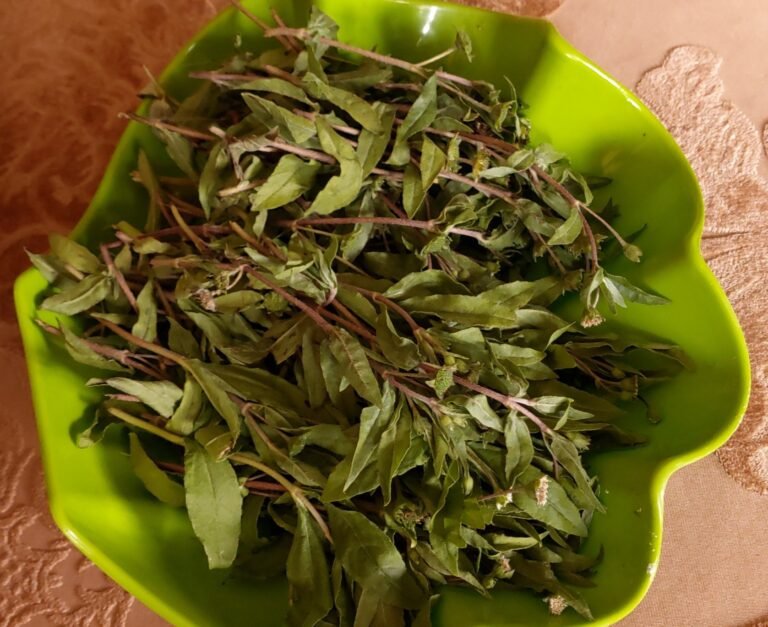
Bhringraj Oil
It is an old Ayurvedic hair tonic that works great for acne, hair loss, and gray hair. It is good for the hair, but it can also help with skin problems, headaches, and mental weakness. When you massage your hair with Bhringraj oil, it calms your mind, boosts your memory, and makes the blood flow better to your skin. This is one of the best hair oils that can stop hair loss and make hair grow faster.
There are different kinds of Bhringraj oil on the market, but this article will talk about one of the best Ayurvedic recipes for hair growth and immunity, as explained by Siddha Yoga Sangraha, an Ayurvedic organization started by Swami Muktananda with the goal of improving health and hair.
Instructions on how to make Bhringraj oil?
Ingredients:
Herb Juice:
2560 grams – Bhringraj juice
640 grams – Amla juice (Emblica officinalis)
640 grams – Brahmi juice
Base Oil:
1280 grams – Sesame (Til) Oil
Herb for Paste (Kalka):
10 grams – Haritaki (Terminalia chebula)
10 grams – Bibhitaki (Terminalia bellirica)
10 grams – Amla (Emblica officinalis)
10 grams – Manjistha (Rubia cordifolia)
10 grams – Babchi (Psoralea corylifolia)
10 grams – Red Sandalwood/Chandan (Pterocarpus santalinus)
10 grams – Padmaks (Prunus Ingredients:
Herb Juice:
– 2560 grams of Bhringraj juice
– 640 grams of Amla juice (Emblica officinalis)
– 640 grams of Brahmi juice
Base Oil:
– 1280 grams of Sesame (Til) Oil
Herb Paste (Kalka):
– 10 grams of Haritaki (Terminalia chebula)
– 10 grams of Bibhitaki (Terminalia bellirica)
– 10 grams of Amla (Emblica officinalis)
– 10 grams of Manjistha (Rubia cordifolia)
– 10 grams of Babchi (Psoralea corylifolia)
– 10 grams of Red Sandalwood/Chandan (Pterocarpus santalinus)
– 10 grams of Padmaks (Prunus cerasoides)
– 10 grams of Nagarmotha (Cyperus rotundus)
– 10 grams of Kachur (Curcuma zedoaria)
– 10 grams of Lodhra (Symplocos racemosa)
– 10 grams of Anantamul (Hemidesmus indicus)
– 10 grams of Mehndi (Lawsonia inermis)
– 10 grams of Yashtimadhu (Glycyrrhiza glabra)
– 10 grams of Jatamansi (Nardostachys jatamansi)
– 10 grams of Priyangu (Callicarpa macrophylla)
– 10 grams of Kuth (Saussurea lappa)
– 10 grams of Mandurcerasoides)
10 grams – Nagarmotha (Cyprus rotundus)
10 grams – Kachur (Curcuma zedoaria)
10 grams – Lodhra (Symplocos racemosa)
10 grams – Anantamul (Hemidesmus indicus)
10 grams – Mehndi (Lawsonia inermis)
10 grams – Yashtimadhu (Glycyrrhiza glabra)
10 grams – Jatamansi (Nardostachys jatamansi)
10 grams – Priyangu (Callicarpa macrophylla)
10 grams – Kuth (Saussurea lappa)
10 grams – Mandur
Method:
Firstly, extract the juices of the herbs and set them aside. Then, purify the sesame oil. Next, prepare a paste or kalka of the herbs by mixing them with water or cow’s milk. After that, mix all the ingredients, including the juices, oil, and kalka, in a mixing bowl. Put the vessel over the flame, and keep stirring until the herbs blend and only the oil remains. Once done, remove it from the flame and allow it to cool and settle for a few days. Finally, store it in a glass container, and your Bhringraj oil is ready to be used.

Benefits Of Bhringraj Oil:
It Cures Baldness And Promotes Hair Growth
A key ingredient in the treatment and prevention of baldness is Bhringraj. By bringing in more nutrients through the blood supply and stimulating hair development, it efficiently improves blood circulation in the scalp and hair follicles. While Ayurveda attests that regular application of Bhringraj oil produces beneficial effects by stimulating the hair follicles, sesame oil nourishes hair.
Treats Scalp Itchiness and Dandruff
A variety of factors, including an overly dry scalp, low air humidity, and poor cleanliness, can cause dandruff, which can eventually cause itching and flaking. Bhringraj oil contains strong anti-microbial and anti-bacterial qualities, but it also has a high specific gravity that makes it able to go deep into the scalp to relieve irritation and dryness. See Also: Natural Ways to Get Rid of Scratchy Dandruff
Apply Bhringraj oil on your hair and scalp before bed for optimal effects. To enable the oil to enter the sebaceous glands deeply, place a steaming towel over your scalp. After leaving it on for the entire night, massage your scalp with lemon juice and shampoo your hair with the best anti-dandruff shampoo.
Reduces Hair Loss
Bhringraj oil is a one-stop shop for hair loss remedies. It successfully lowers stress levels, cools the scalp, and balances the Vata and Kapha doshas—all of which are the main reasons of hair loss. It nourishes hair follicles, improves blood flow to the scalp, keeps the scalp from drying out, and thus lowers hair loss. Furthermore Finalization: Infographic: 5 Simple Home Remedies to Manage Hair Loss
Prevents Hair From Dying Too Soon
Haritaki and Jatamansi, two of the active ingredients in Bhringraj hair oil, are very helpful in preserving hair’s natural color and delaying the onset of greying. For hair coloring, henna made with Bhringraj plants is also beneficial. The regular application of Bhringraj oil is crucial for both slowing down the occurrence of gray hairs and averting more in the future.
Treats Infections of the Scalp
Bhringraj potent antibacterial qualities render it an excellent remedy for a range of scalp infections. Bhringraj oil is mostly useful in treating various types of folliculitis, an illness caused by Staphylococcus aureus that results in inflammation of the hair follicles and eventually causes baldness and hair loss. It also cures Tinea capitis, a ringworm infection of the scalp. Frequent application of this miracle oil promotes hair development, lessens scalp irritation, soothes scalp irritation, and lessens inflammation of the hair follicles.
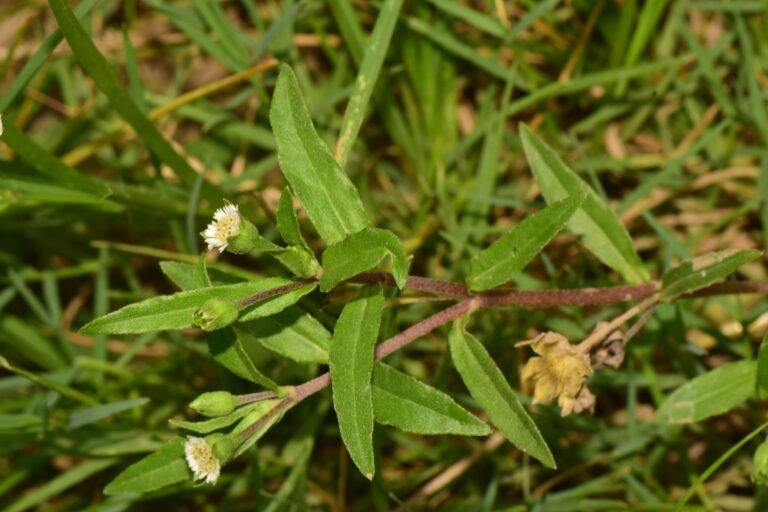
Bhringarajasava
This strong Bhringraj mixture works wonders to improve digestion, boost appetite, and enhance metabolism. It also helps relieve emaciation, cough, and cold symptoms, improve the quality and texture of skin and hair, and increase libido and stamina.
Ingredients
The following is a list of ingredients and their respective parts used in Bhringraj decoction:
– 2460 parts of Eclipta alba (Bhringraj)
– 40 parts of Terminalia chebula (Haritaki)
– 10 parts of Piper nigrum (Pippali/ Long pepper)
– 10 parts of Myristica fragrans (Jatiphal/ Nutmeg)
– 10 parts of Syzigium aromaticum (Lavanga/ Clove)
– 10 parts of Cinnamomum zeylanica (Dalchini/ Cinnamon)
– 10 parts of Elettaria cardamomum (Elaichi/ Cardamom)
– 10 parts of Cinnamomum tamala (Tejpata/ Bay leaf)
– 1000 parts of Gur or Jaggery are used.
Method
First, mix the Bhringraj juice in an asava vessel that has been coated with the goodness of cow ghee. Then, add some jaggery and haritaki powder to it. Allow the mixture to ferment for 15 days.
Once the fermentation is complete, add the other ingredients to it and keep it aside for another 15 days.
After 15 days, filter the asava mixture and store it in glass bottles for future use.
How To Use?
After meals, take two doses of the asava formulation infused with water.

Bhringraj Churna
The finely powdered mixture known as Bhringraj churna is prepared from the leaves, blossoms, roots, and stems of the Bhringraj tree. It is very good for skin, hair, and eyesight. It supports better liver and heart health as well as natural blood purification.
How Should It Be Used?
Before meals, Bhringraj churna can be consumed two to three times a day. It can be consumed with milk, jaggery, mishri, lukewarm water, or cow’s ghee.
Bhringraj Juice
The decoction made from Bhringraj leaf or flower extract is called Bhringraj juice. It facilitates digestion and increases appetite. It also works well to prevent seasonal infections and the signs and symptoms of the flu and cold.
How Should It Be Used?
You can drink Bhringraj juice twice or three times a day, preferably before meals. It can be consumed with milk, honey, jaggery, haritaki powder, or mishri.

Why Is Bhringraj Beneficial?
Bhringraj for Migraine and Headache Relief
Bhringraj is a great product for nourishing hair, but it also works wonders for easing migraine and headache symptoms. Apply two to three drops of Bhringraj oil on your forehead, then let it relax. This oil’s calming qualities ease the sharp pain and have a calming impact. See Also: 6 Easy Ways To Get Rid Of A Headache
Bhringraj For Vision
Bhringraj has strong Chakushya qualities, which make it very helpful for enhancing vision. To clear nasal congestion and enhance vision, place two drops of Bhringraj oil or juice, diluted with water, in each nostril in the morning and gently pull it in.
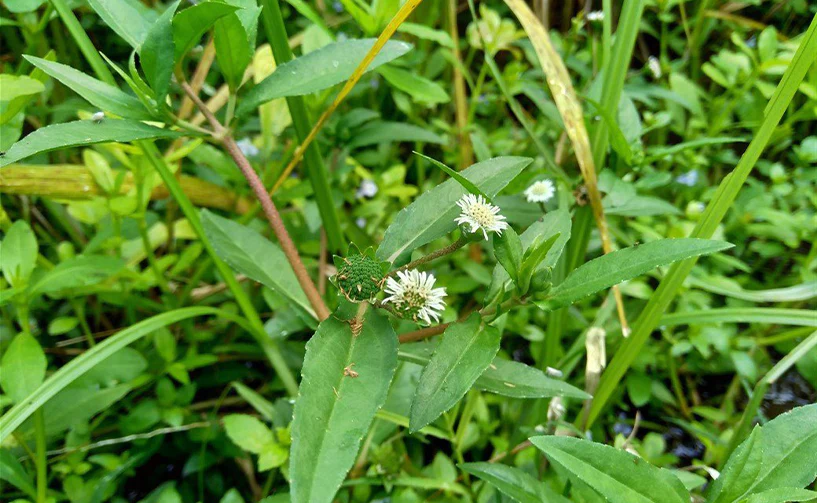
Bhringraj For Skin Care
Bhringraj antibacterial and antimicrobial qualities are important when treating skin infections. It is extremely important for blood detoxification and wound healing. Applying the leaf paste or juice topically relieves irritated skin, heals infections such as eczema, boils, pimples, acne, and sunburn, and leaves skin feeling renewed and healthy. See Also: Do You Get Skin Breakouts? Try These Home Remedies
Bhringraj For the Liver
Bhringraj’s active ingredients shield the liver from damaging substances by eliminating toxins or AMA Doshas from the body. Moreover, it promotes liver cell regeneration.
Bhringraj For Gastro-Intestinal System
Bhringraj is very helpful in enhancing the gastrointestinal system’s performance. An individual can more easily digest, absorb, assimilate, and expel waste thanks to its carminative and digestive qualities. In addition, it guards against nausea, heartburn, stomach discomfort, and ulcers.
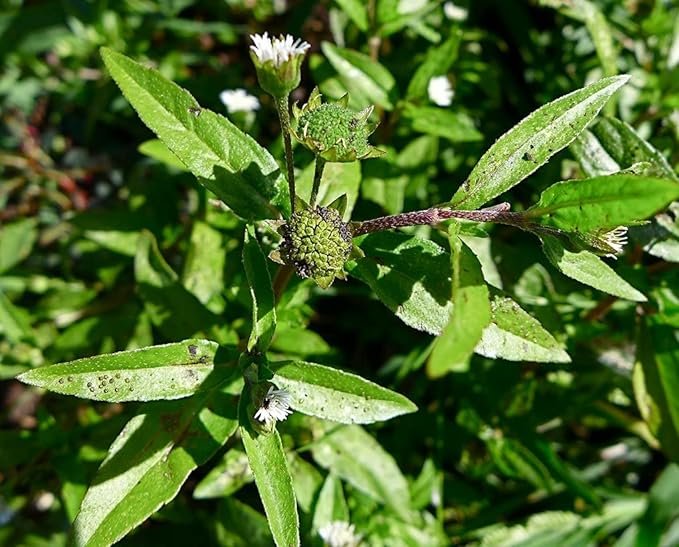
Bhringraj For the Heart
Because of its potent antioxidant properties, Bhringraj is highly valued in the treatment of many cardiac problems. It lowers the risk of heart attacks, heart blockages, blood clots, and other heart-related problems by regulating excessive blood pressure, controlling cholesterol, strengthening the heart muscles, and preventing lipid buildup in the blood arteries. It is also essential in lowering blood triglyceride levels. Frequent ingestion of this strong leaf extract in water with honey is very beneficial for heart health enhancement.
Bhringraj For Pain Relief
Because of its potent analgesic qualities, which are essential in reducing pain and inflammation, Bhringraj is frequently used to treat pain associated with osteoarthritis and rheumatoid arthritis.
Bhringraj For Immunity
The potent ayurvedic herb is highly valuable in enhancing the body’s overall energy and stamina. Bhringraj’s active components increase the body’s vitality and lessen weariness and weakness. Additionally, it enhances the adrenal glands’ ability to function, which lowers stress levels.
Bhringraj In Case of Diabetes
Bhringraj’s superior hypoglycaemic quality is largely responsible for lowering the body’s blood sugar levels. When a person takes Bhringraj in a formulation form, the pancreatic β-cells begin to produce insulin. Low blood glucose levels are caused by reducing the conversion of starch to glucose.
Bhringraj For Respiratory Problems
Because of its potent anti-microbial qualities, Bhringrajis is very helpful in preventing infections and is therefore used to treat respiratory conditions such as asthma, bronchitis, and symptoms of cough and cold. Additionally, the anti-inflammatory qualities ease the body and lessen bronchial irritation.
Bhringraj In Case of Dysentery
The best option for treating dysentery efficiently is Bhringraj . It eliminates all evidence of the causative agent, Entamoeba histolytica, from the liver and intestines and stops the dormant amoeba from staying in the digestive tract and causing more issues in the event of amoebic dysentery. A Bhringraj juice blended with honey relieves dysentery symptoms.
Bhringraj for Ulcers
Possessing potent antimicrobial, anti-inflammatory, and anti-ulcer qualities, Bhringraj is highly valued for its ability to treat several ulcer types, including peptic ulcers, ulcerative colitis, canker sores, and mouth ulcers. This plant’s bioactive components aid in wound healing in addition to promoting tissue regeneration.
Bhringraj leaf juice or paste can be applied topically to ulcers, or for faster healing, create a poultice with the leaves and apply it to the wound.
Bhringraj To Treat Stings And Bite
Bhringraj is a classic plant for treating bites from snakes, scorpions, and other insects because of its antimicrobial, analgesic, and anti-inflammatory qualities. However, in order to prevent complications, one should speak with a doctor before beginning any form of treatment.
Bhringraj For Cholera
The infectious disease cholera is brought on by consuming food or water tainted with the Vibrio cholerae bacteria. If treatment is not received, symptoms such as severe watery diarrhea can worsen and even result in death. When it comes to treating cholera, dysentery, and diarrhea, Bhringraj is very helpful.
If taken twice a day, two teaspoons of Bhringraj juice and a pinch of rock salt will effectively treat cholera symptoms.
Bhringraj For Memory
Bhringraj is a traditional medicine used to improve brain function. Its high content of antioxidants and flavonoids enhances a person’s ability to concentrate, focus, stay calm, and be alert. It enhances memory, reasoning, problem-solving, and other cognitive functions as a brain tonic and stimulant. By boosting mitochondrial function, the neuroprotective components in the plant avert memory loss and subsequently Alzheimer’s.
Side Effects of Bhringraj
Although there are no known negative effects of this ancient herb, it is always advisable to speak with an ayurvedic physician or practitioner before using Bhringraj formulations to avoid any potentially hazardous interactions with existing medications.
A slightly larger dosage of Bhringraj may, in rare instances, cause heartburn or gastrointestinal problems.
It is advised that you do a patch test before using the oil by putting a drop on your skin and noting any allergic reactions, such as itching or redness.
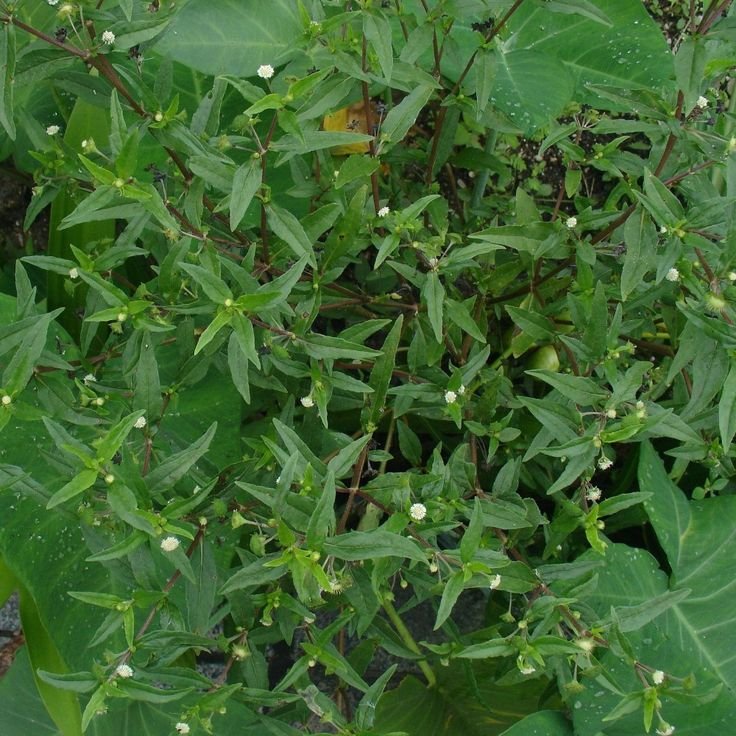
Frequently Asked Questions
What Are The Components Of Mahabhringraj Oil?
One of the greatest and most widely utilized forms of Bhringraj oil for encouraging hair growth is Mahabhringaraj oil. In addition to Bhringraj extract and sesame oil as the foundation oil, this oil also includes other potent herbs, including Mulethi, Manjishtha, and Anantamul.
Is Bhringraj Beneficial for Immunity?
Contrary to popular belief, Bhringraj has many uses that go well beyond hair care. Increasing general immunity is one of Bhringraj’s best applications. The active ingredient in Bhringraj significantly promotes the generation of white blood cells, protecting you from infectious diseases and promoting overall health and fitness.
Dosage: Take ¼ to ½ teaspoon of honey and Bhringraj powder.
Can Bhringraj Supplements Be Taken With Prescription And Non-Prescription Medicines?
Prior to taking Bhringraj in any form, it is much safer to speak with a doctor as there is no conclusive evidence of its potential to interact negatively with over-the-counter or prescription medications.
How Is Bhringraj Powder Applied to Hair?
Powdered bhringraj is very helpful for improving the health of your hair. Combine ½ tsp -1 Bhringraj powder with coconut oil to form a mixture. Cover the scalp and hair follicles with this paste. Put on a shower cap, let the paste sit for one to two hours, and then shampoo. Use this hair pack three times a week to stop hair loss and delay the onset of premature graying.
How To Consume Bhringraj Powder For Hair Growth?
Take ¼ – ½ tsp of Bhringraj powder with water twice a day after having a light meal. Continue taking Bhringraj powder supplement for at least 1 – 2 months for observing positive results. The hair growth increases considerably, with much lesser early greying and hair fall.
How To Identify Bhringraj Plant?
It takes 3 meters of growth for Bhringraj to reach its full height. It has a long stalk and white flowers that are about 6 to 8 mm across, stand alone, and have wings. The leaves are fixed in place, lance-shaped, and grouped in the opposite direction. It has clear roots that are cylinder-shaped and gray. The plant mostly grows in India, China, Nepal, Thailand, and Brazil, where it is damp.
Several ayurveda texts talk about Bhringraj as bhring, markav, angarak, keshraaj, bhringaar, and keshranjan. The Sanskrit texts of Raj Nighantu divide Bhringraj into three groups:
Shweta Bhringraj has flowers that are white.
Peet Bhringraj has flowers that are yellow.
Neel Bhringraj has flowers that are blue.
Conclusion
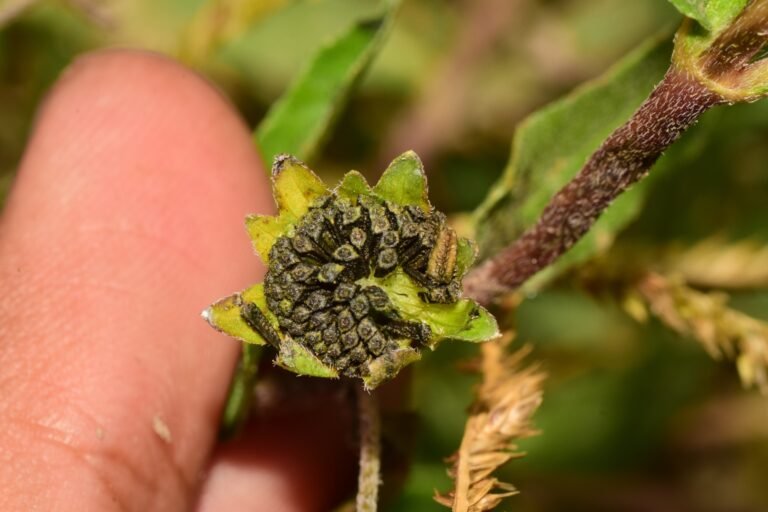
Bhringraj is widely recommended as a strong “hair nourishing” herb that effectively treats and cures a variety of illnesses, such as digestive, respiratory, liver, and heart problems, as well as hair and skin concerns, diabetes, arthritis, pain, and inflammation. You can use this formulation and profit from its results with a good doctor’s consultation, since there have been no recorded ill effects.
Also Read: How To Write Application In Sanskrit – संस्कृत में आवेदन पत्र लेखन
Also Read: A Complete Guide to Box Cricket Rules and Regulations
Also Read: What is Sterling Silver? How is it Different to Silver?
Leave a Comment